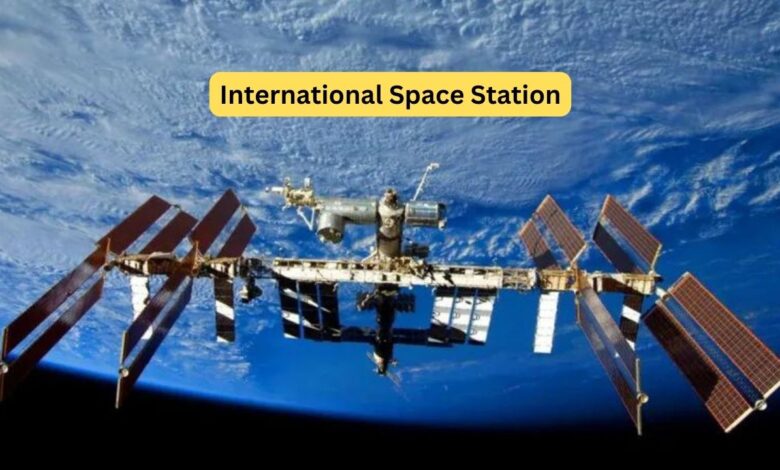
International Space Station (ISS) is not just a marvel of modern engineering but also a symbol of international cooperation and scientific advancement. Orbiting approximately 400 kilometers above Earth, the ISS serves as a spacecraft, an observatory, a laboratory, and a home, hosting up to ten astronauts and cosmonauts at any given time. Let’s delve into the fascinating details of this extraordinary structure and its significance in space exploration.
A Brief History of the International Space Station
Origins and Construction
The idea of a space station has been a dream since the early days of space exploration. The ISS’s journey began in 1984 when President Ronald Reagan called for NASA to build a space station within a decade. The project became an international effort, with significant contributions from NASA (United States), Roscosmos (Russia), JAXA (Japan), ESA (European Space Agency), and CSA (Canadian Space Agency).
Construction of the ISS started in 1998 with the launch of the Russian module Zarya. Over the next several years, additional modules were added, each serving different purposes, from living quarters to laboratories. The ISS became fully operational in the 2010s, although new modules and technology continue to be integrated.
Structure and Components of the ISS
Living Quarters
The ISS has multiple modules designed for living and working. The Zvezda Service Module provides life support, crew quarters, and the command center. The Harmony module connects various laboratories and living quarters, facilitating the movement of crew and equipment.
Laboratories
The ISS boasts several laboratories where cutting-edge research is conducted:
- Destiny (US Laboratory): Focuses on a wide range of scientific disciplines, including biology, physics, and material science.
- Columbus (European Laboratory): Conducts research in life sciences, fluid physics, and space science.
- Kibo (Japanese Laboratory): Known for its external facility for experiments exposed to the vacuum of space.
- Nauka (Russian Laboratory): Adds capabilities for scientific research and enhances living conditions.
Observatories
Modules like the Cupola provide astronauts with stunning panoramic views of Earth and space. This module is often used for Earth observation, photography, and controlling the station’s robotic arm.
Scientific Research on the ISS
Microgravity Experiments
One of the primary purposes of the ISS is to serve as a laboratory for research in microgravity. Scientists conduct experiments that would be impossible on Earth, such as studying fluid dynamics, combustion, and the behavior of materials in the absence of gravity. These experiments have led to advancements in medicine, technology, and our understanding of fundamental physics.
Biological and Medical Research
The ISS is a unique environment for studying the effects of long-term spaceflight on the human body. Research on the station has provided insights into muscle atrophy, bone loss, and radiation exposure, helping to develop countermeasures for future long-duration missions to Mars and beyond.
Environmental Science
The ISS also plays a crucial role in Earth observation. Instruments on board monitor the planet’s atmosphere, oceans, and land, providing valuable data for climate science, natural disaster response, and environmental monitoring.
International Cooperation and Cultural Impact
Collaborative Efforts
The ISS is a testament to international cooperation, with 15 nations working together to build and operate the station. This collaboration has fostered peaceful relations and scientific exchange, showcasing what humanity can achieve when united by a common goal.
Educational Outreach
The ISS serves as a platform for educational outreach, inspiring millions of students worldwide. Through live broadcasts, educational programs, and interactive experiments, the station encourages young people to pursue careers in science, technology, engineering, and mathematics (STEM).
Life Aboard the ISS
Daily Routine
Living on the ISS requires a well-structured daily routine. Astronauts spend their days conducting scientific experiments, maintaining the station, exercising to counteract the effects of microgravity, and communicating with mission control and loved ones.
Food and Leisure
Food on the ISS is specially prepared and packaged to ensure it is nutritious and easy to consume in microgravity. Leisure time includes watching movies, reading, playing musical instruments, and gazing at Earth through the Cupola.
The Future of the ISS
Commercial Partnerships
The ISS is entering a new era of commercial partnerships. Companies like SpaceX and Boeing are developing spacecraft to transport astronauts to and from the station. These partnerships aim to reduce costs and expand access to space for commercial and scientific purposes.
Gateway to Deep Space Exploration
The ISS is also a stepping stone for deep space exploration. Research conducted on the station is vital for planning future missions to the Moon, Mars, and beyond. Technologies and techniques developed on the ISS will be crucial for the success of these missions.
Conclusion
The International Space Station stands as a beacon of human ingenuity, collaboration, and exploration. It has revolutionized our understanding of science and space, provided invaluable data for future space missions, and inspired countless individuals around the globe. As we look to the future, the ISS will continue to play a pivotal role in advancing human space exploration and fostering international cooperation.
Recent Posts
- Warwick Davis Net Worth: Exploring the Life and Fortune of a Legendary Actor
- Samuel L. Jackson Net Worth: A Comprehensive Look at His Wealth and Success
- Ryan Garcia Net Worth: A Comprehensive Breakdown of His Wealth
- Michael Owen Net Worth: A Detailed Look at His Wealth, Career, and Investments
- Michael Caine Net Worth: A Deep Dive Into His Wealth and Career
Recent Comments

Chumba Casino Koi Fish Game: A Comprehensive Guide

Brango Casino $100 Free Chip: A Comprehensive Guide

J7Bet Casino: An In-Depth Review of the Premier Online Gambling Destination

Unlocking the World of Content with HBOMAX/TVSIGNIN NO 1: Streamlining Entertainment

Warwick Davis Net Worth: Exploring the Life and Fortune of a Legendary Actor

Samuel L. Jackson Net Worth: A Comprehensive Look at His Wealth and Success

Ryan Garcia Net Worth: A Comprehensive Breakdown of His Wealth


